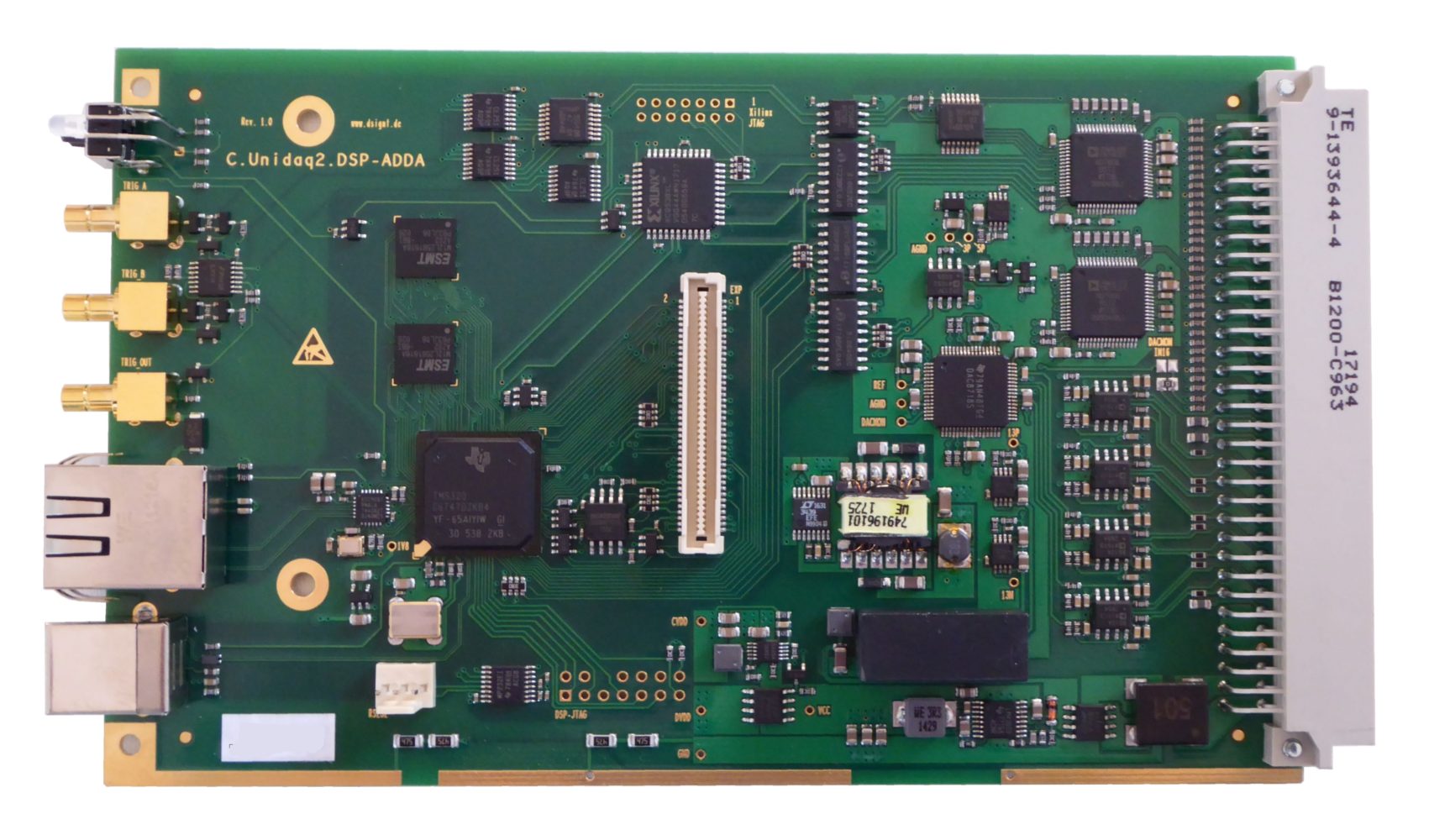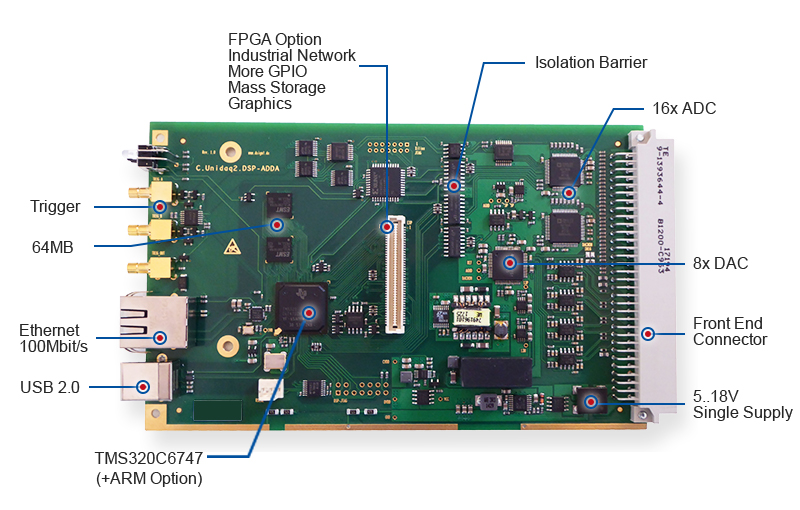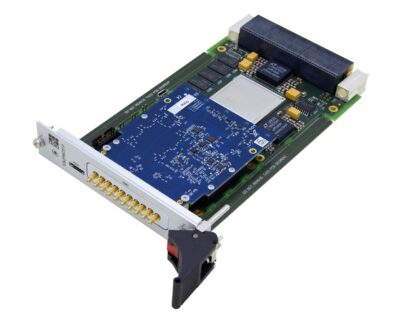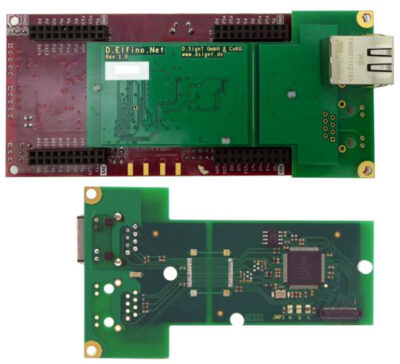Description
Application Areas
- vibration analysis and machine monitoring
- acoustic measurements, microphone array processing
- servo control and positioning systems
- measuring devices for research, development, and test stands
- laboratory equipment for education classrooms
Key Features
- 16 simultaneously sampling SAR A/D converters, 16-bit, 175kS/s
- 8 inherent monotonic D/A converters, 16-bit, 105kS/s
- internal or external sampling triggers for ADC and DAC
- 456 MHz floating-point DSP (TMS320C6747) with 64 Mbytes SDRAM
- USB2.0 Device Port and 100Base-T Fast Ethernet
- expansion port for mass storage, fieldbusses, display, GPIO, FPGA, etc.
- isolation barrier between analog and digital circuits
- single-supply power 5-18V, typ. 3W





